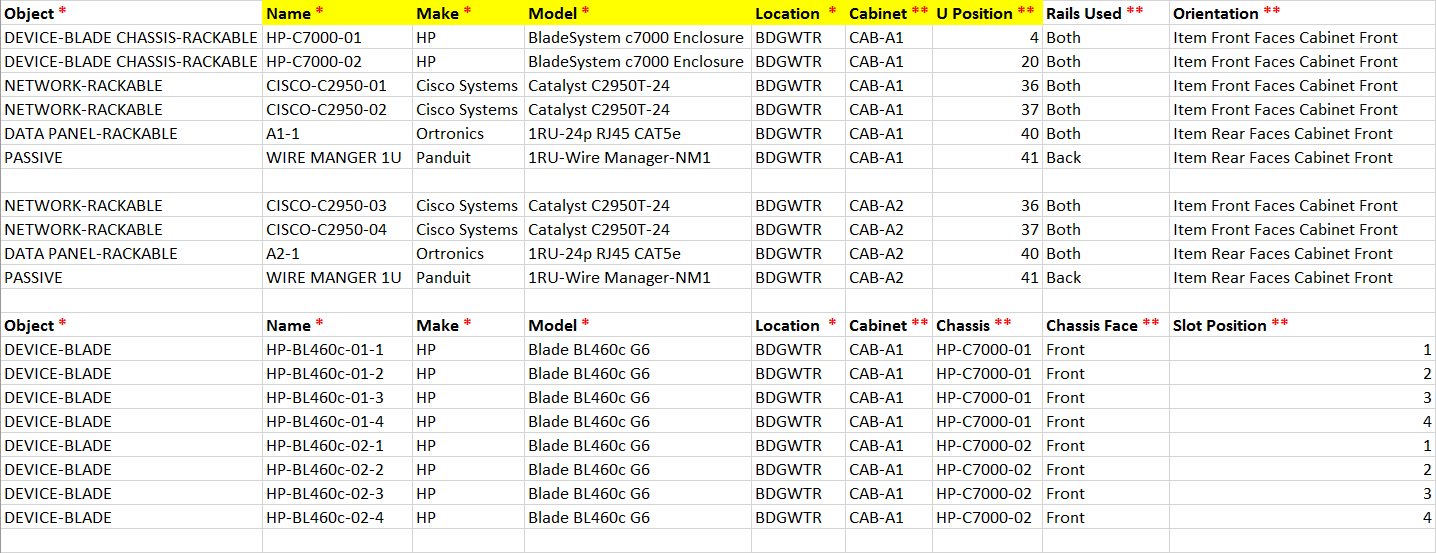5 Need-to-Have Values for Any Asset Inventory Migration
Whether as part of a data center move or when switching to a new Data Center Infrastructure Management (DCIM) software, most data center managers will need to migrate their asset management information from one database to another sometime in their careers. Unfortunately, that’s easier said than done. Inaccurate inventory data, tracking devices in multiple spreadsheets, and inadequate reporting can wreak havoc on asset management. These issues also make it difficult to locate and troubleshoot your hardware.
In our experience, certain data values are foundational for migrating from one database to another at the asset level. These values enable you to quickly identify and locate your assets and function as prerequisites for other asset data, such as serial number and asset tag. More importantly, having this information for your assets gives you the best chance of having an accurate inventory in your data center management software from Day 1.
When planning an asset inventory migration, at a minimum, make sure you have accurate data for these five values:
1. Name. Each asset needs to have a unique identifier in your DCIM software so that you’ll be able to access and manage the appropriate device or item. In most data center management tools, the name is the unique identifier. However, other unique identifiers might include the serial number or asset tag.
2. Make and Model. While technically two separate values in most DCIM software tools, the make (or manufacturer) and model both enable you to augment your asset information with manufacturer specifications. When used with a repository of model information, such Sunbird’s Models Library, you can leverage detailed model data (e.g. dimensions, weight limitations, power requirements, and data and power port information) to create templates that simplify cloning your assets and to reserve the appropriate space, power, and network capacity for them.
3. Location/Site. With the increasing focus on colocation and hybrid environments, more organizations are maintaining assets across multiple centers, so it’s easy to see why knowing the location or site of your asset is fundamental. This could be the data center itself, a floor in your data center, a room, or other locations above the cabinet level.
4. Cabinet (optional). Cabinet information is critical to being able to quickly and accurately where your asset is physically located in the site or data center.
Pro Tip: Ensuring that your cabinet has a unique identifier (See Point 1 above) and that your cabinet naming convention is easily understandable within the site so you can track the cabinet itself as an asset as well as the location of other assets.
5. U-Position (optional). Knowing your asset’s U-position is the last piece required to pinpoint its physical location. When you have the U-position, you’re easily able to identify where the asset is in the cabinet elevation.

Your asset inventory can have as many values as you need for your data center deployment, but name, make and model, location, cabinet, and U-position are foundational to expanding the attributes you include.
When You Don’t Have Accurate Data Center Asset Management Data
If you don’t have information for these values, the information is outdated, or you don’t trust the information you have, you will need a data center audit. An audit requires a technician to physically walk the floor and collect the information on these fives values.
While an audit is a manual, time-consuming process, the intended outcome is to have accurate and complete asset inventory information. When you are confident in the quality of your asset data, the information can be ingested into and maintained in your DCIM software. Once you have these five, you can add on other values that are important for your specific data center project.
Migrating your data center asset management information is considerably more difficult when you don’t know or don’t trust your data on what you have and where it’s located. When planning your next asset inventory migration, ensure that you have information for these values, and you’ll be on your way to accurately managing and tracking your data center assets.
Looking for more tips to facilitate a data center migration? Check out our Data Center Frontier article on often-overlooked considerations for successful data center moves.





























